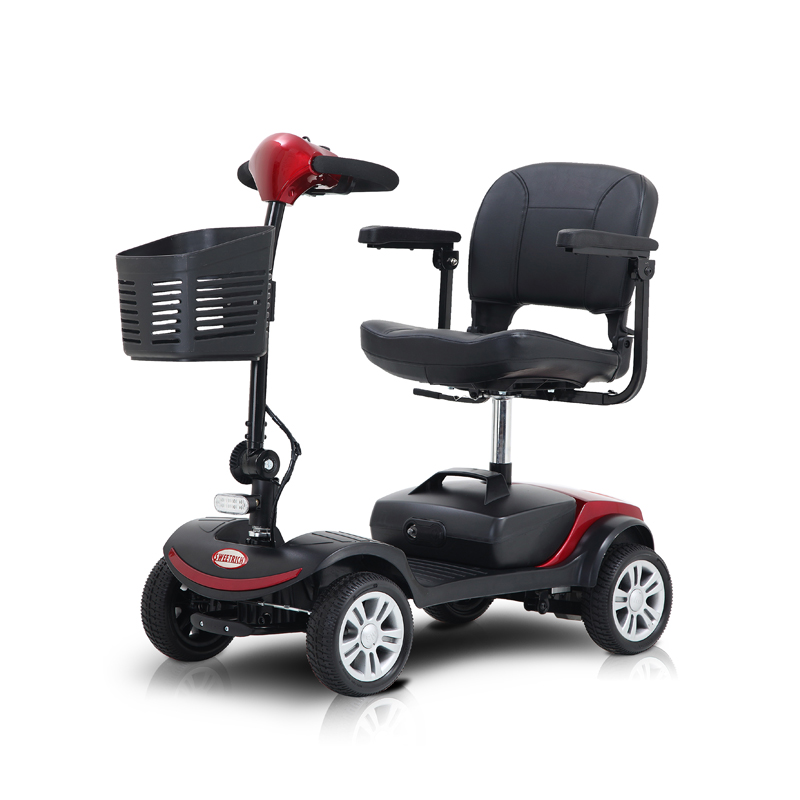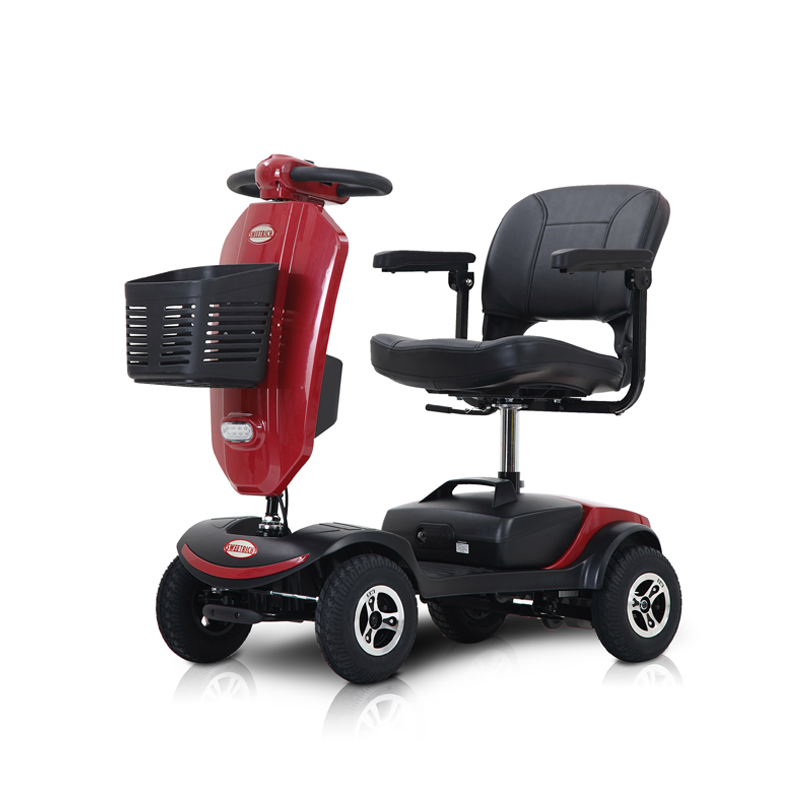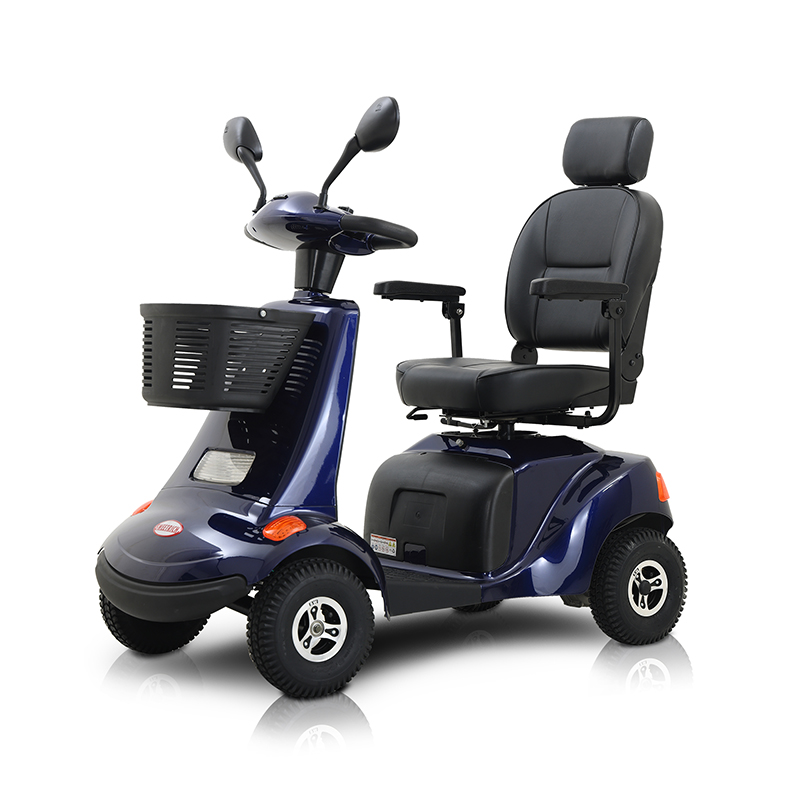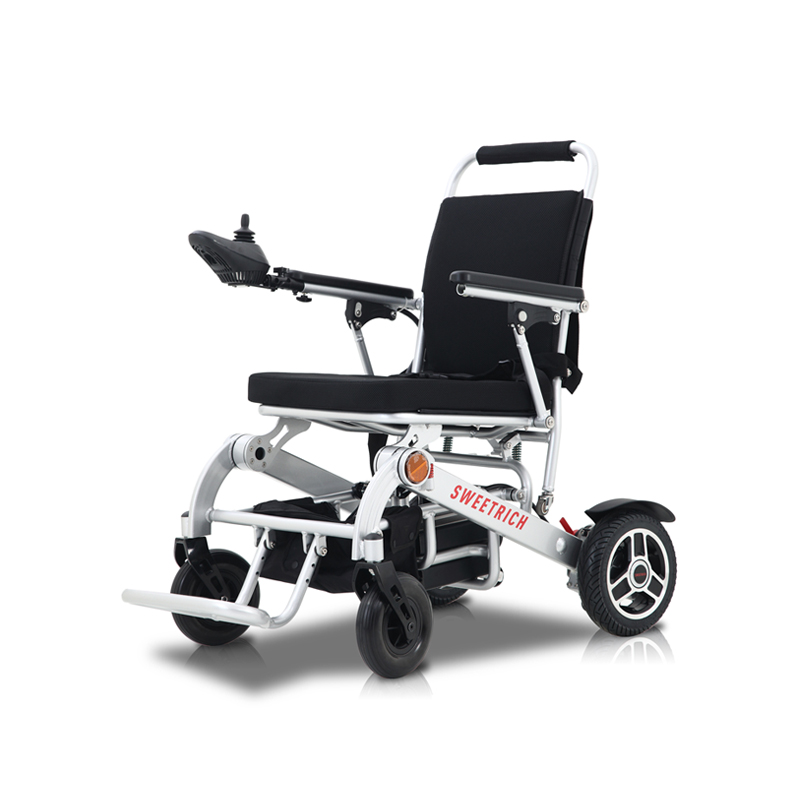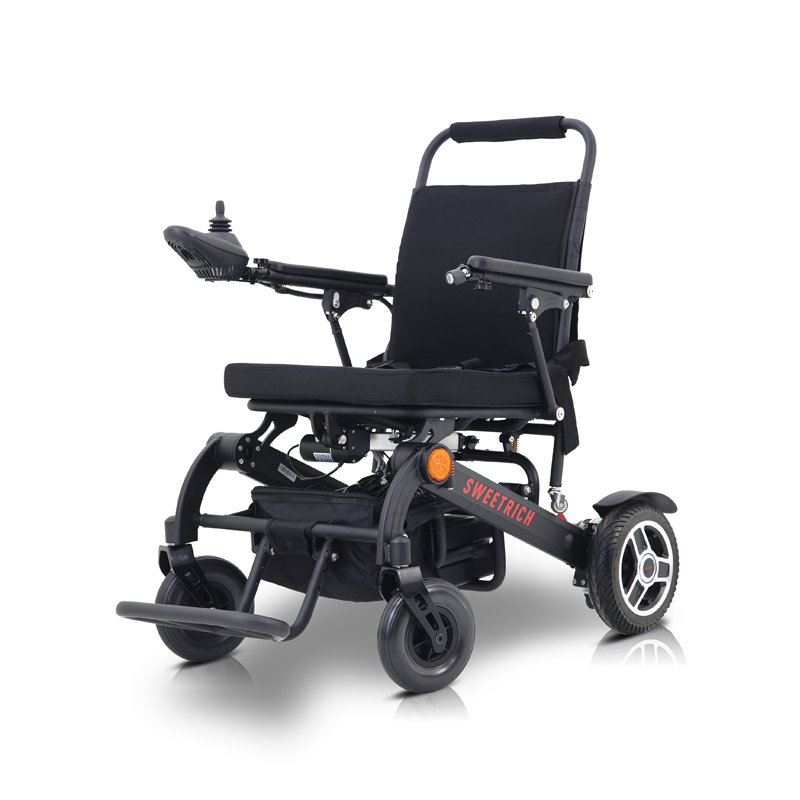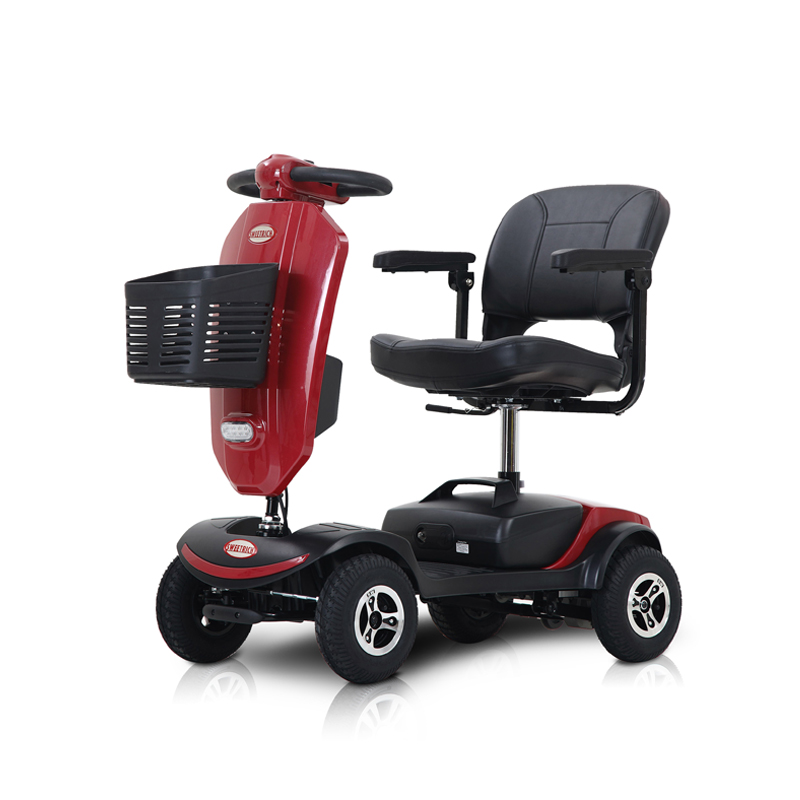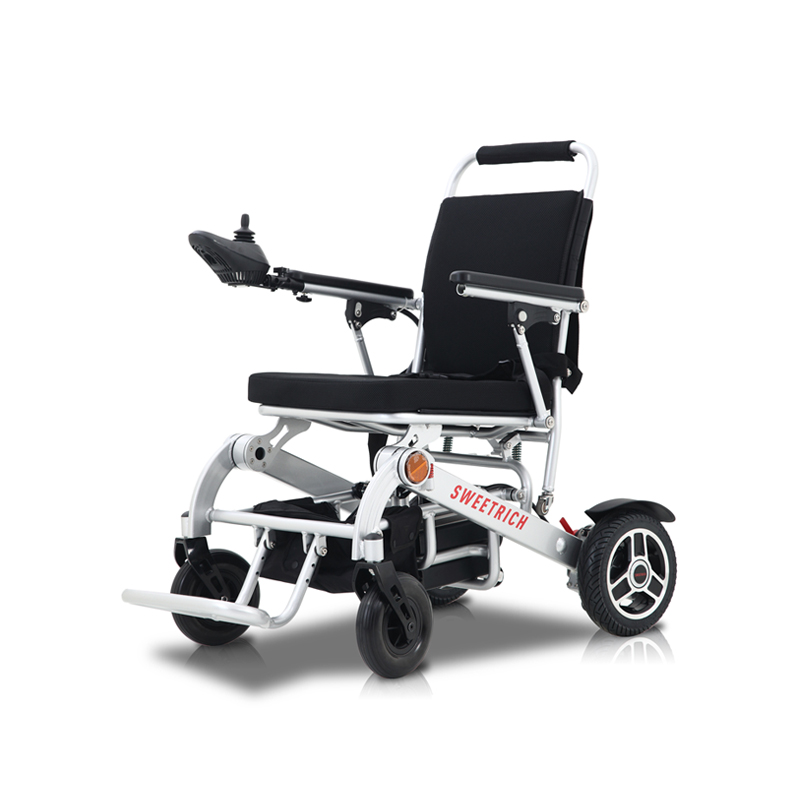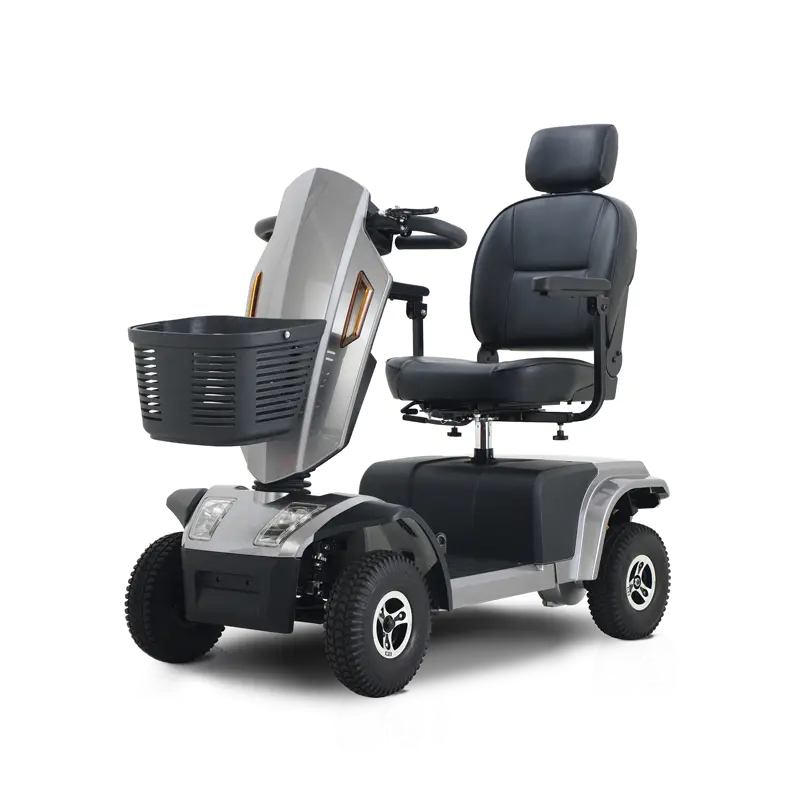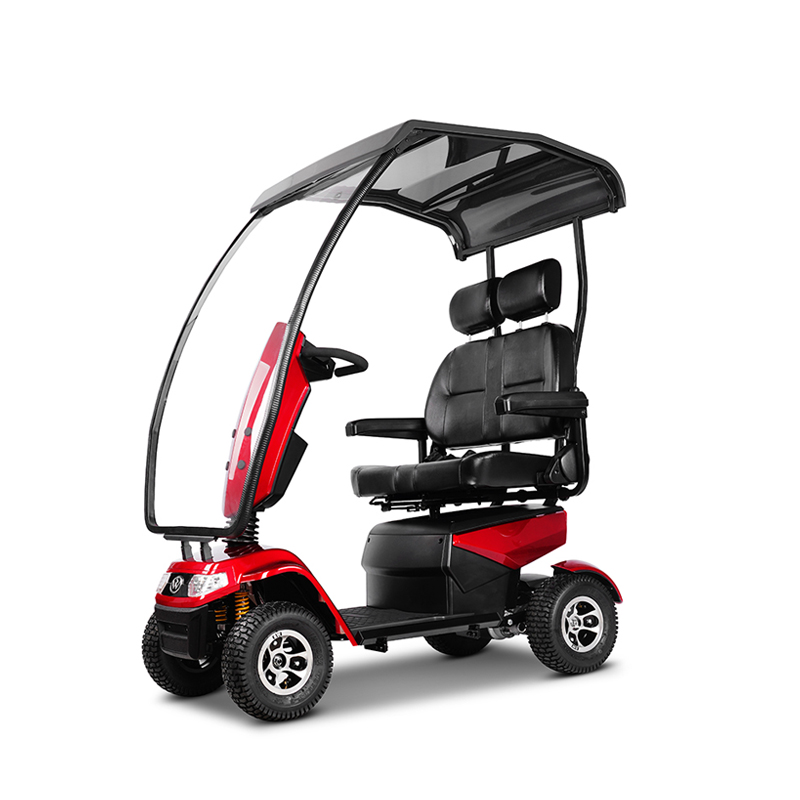Getting Started: Pre-Ride Safety Checks and Scooter Familiarity
Before you embark on any journey, a thorough pre-ride inspection is as crucial as buckling a seatbelt in a car. This routine ensures your mobility scooter is in working condition, preventing potential malfunctions that could to accidents or leave you stranded. Taking a few minutes to check your scooter can make the difference between a pleasant, safe outing and a stressful, hazardous situation. This process involves a visual inspection, a functional test of key components, and a personal readiness check.
The Essential Pre-Ride Checklist
Develop a consistent habit of going through this checklist every time you plan to use your scooter. It should become second nature, much like checking your mirrors before driving.
- Tires and Casters: Inspect all tires for proper inflation (if applicable) and look for any signs of wear, cracks, or embedded debris. Ensure the front casters spin freely and are not wobbly.
- Battery Charge: Verify that your battery is fully charged. A low battery can cause a sudden loss of power, especially on an incline. Plan your trip according to your scooter's range to avoid being stranded.
- Brakes: Test your brakes on a flat, safe surface before entering public areas. Ensure they engage smoothly and bring the scooter to a complete stop without pulling to one side.
- Controls and Console: Check that all controls, including the throttle, forward/reverse lever, and speed dial, are functioning correctly and are easy to reach and operate.
- Seat: Ensure the seat is locked securely in its position and is at a comfortable height and angle for you.
- Lights and Reflectors: If you will be riding in low-light conditions, test your headlight, taillight, and turn signals. Clean all reflectors to ensure visibility.
Knowing Your Scooter's Capabilities
Understanding the specific capabilities and limitations of your mobility scooter is a fundamental aspect of safety. Not all scooters are created equal, and operating yours within its designed parameters is essential. Pushing a scooter beyond its limits can to premature wear, battery failure, or even a tip-over. A key area of consideration is the scooter's performance on different terrains. For instance, if you are researching options for uneven ground, you might be looking for information on the mobility scooter for uneven ground. This specific search indicates a need for a model with certain features, which can be contrasted with standard pavement scooters.
For example, a scooter designed for indoor use and smooth pavements will have a lower ground clearance, smaller tires, and a less powerful motor compared to an all-terrain model. Using an indoor scooter on a gravel path or a grassy hill is not only inefficient but also dangerous, as it increases the risk of getting stuck or tipping over. Conversely, a heavy-duty, all-terrain scooter might be cumbersome and less maneuverable in tight indoor spaces like grocery store aisles. The following table contrasts the general capabilities of different scooter types to highlight why knowing your model's specs is critical.
| Scooter Type | Ideal Terrain | Typical Features | Limitations |
|---|---|---|---|
| Standard Pavement/Indoor | Smooth surfaces, shopping malls, sidewalks | Compact design, small tires, tight turning radius | Struggles with gravel, grass, or steep inclines |
| All-Terrain/Outdoor | Grass, dirt paths, gravel, mild slopes | Higher ground clearance, knobby tires, more powerful motor | Larger size, wider turning circle, less suitable for cramped indoor spaces |
| Heavy-Duty/All-Terrain Plus | Rougher trails, steeper hills, sand | Highest ground clearance, robust suspension, very powerful motor and battery | Heaviest and largest, requires more storage space, cost |
Navigating the Urban Landscape: Rules of the Road and Pathway Etiquette
Once you and your scooter are prepared, the next step is to navigate the shared spaces of our communities safely and courteously. Public spaces are used by pedestrians, cyclists, and other scooter users, and understanding the rules of the road and practicing good etiquette ensures a harmonious and safe environment for everyone. Your mobility scooter provides freedom, but with that freedom comes the responsibility to operate it with awareness and consideration.
Understanding Your Legal Status and Right-of-Way
The legal classification of a mobility scooter can vary by jurisdiction, but they are commonly treated as pedestrians. This means you should generally use sidewalks and crosswalks, not the roadway. However, local laws can differ significantly, so it is imperative to check the specific regulations in your area. For example, in some places, if a sidewalk is unavailable or impassable, you may be permitted to ride on the road's shoulder, facing traffic. Knowing these rules helps you avoid fines and, more importantly, dangerous interactions with cars.
- Always yield to pedestrians. They have the right-of-way on sidewalks and in crosswalks.
- Use audible signals, such as a bell or your voice, to politely alert pedestrians of your presence from a reasonable distance. Avoid startling people.
- Obey all traffic signals and pedestrian crossing lights.
- When crossing a road, do so at a designated crosswalk, and make eye contact with drivers whenever possible to ensure they see you and are stopping.
- If you must briefly use a road, stay as far to the right as possible and be hyper-aware of traffic.
Mastering Maneuvers in Confined Spaces
Crowded areas like shopping centers, farmers' markets, and public events require heightened awareness and skilled maneuvering. Your ability to control your scooter precisely in these environments is key to preventing collisions and navigating smoothly. A common challenge is dealing with doors, both automatic and manual. The key is patience and positioning. For automatic doors, approach slowly and directly to ensure the sensor detects you. For manual doors, if no one is available to assist, you may need to dismount carefully to open it, ensuring your scooter's brakes are locked. Another frequent query among users is about how to maneuver a mobility scooter in tight spaces. This skill involves several techniques.
- Slow Down: Reduce your speed to the setting when entering a confined or crowded area. This gives you more time to react.
- Use Your Mirrors: Constantly check your rearview mirrors to be aware of what and who is behind you, especially before turning or stopping.
- Practice Turning: Understand your scooter's turning radius. Practice making tight turns in an empty parking lot. Use a three-point turn if a space is too tight for a single maneuver.
- Be Visible and Predictable: Avoid sudden stops or erratic changes in direction. Signal your intentions, either with electronic turn signals or with hand gestures, when possible.
- Awareness of Surroundings: Be mindful of your scooter's full dimensions, including the length of the tiller and the width of the seat. Be careful not to clip displays in stores or bump into people.
Advanced Safety: Handling Inclement Weather and Emergencies
While fair-weather riding is straightforward, true preparedness means being equipped to handle less-than-ideal conditions and unexpected situations. Weather can change rapidly, and mechanical issues can arise without warning. Planning for these scenarios ensures that you remain safe and can get help if needed. This is especially important for users who rely on their scooters for daily errands and cannot always postpone a trip due to a light rain or a weather forecast.
Riding Safely in Rain and Wind
Wet and windy conditions present unique hazards for mobility scooter users. Slippery surfaces reduce traction, and strong gusts can affect stability. If you must venture out in the rain, extra precautions are necessary. Firstly, ensure your scooter is rated for use in wet conditions; are water-resistant but not fully waterproof. Avoid deep puddles, as they can damage the electrical components. Braking distances are significantly longer on wet pavement, so you should begin to slow down much earlier than you normally would. Furthermore, visibility is reduced for both you and drivers, so wearing bright, reflective clothing and ensuring your lights are on is crucial. A related and valuable search term for users is waterproof mobility scooter accessories for rain, which highlights the desire to enhance a scooter's capability in bad weather.
- Use a scooter canopy or a large umbrella (if you can safely hold it) to stay dry.
- Invest in a waterproof cover for the control panel or a full scooter cover for when it is parked.
- Wear a waterproof jacket and pants to keep yourself dry.
- Reduce your speed considerably and avoid sharp turns to prevent skidding.
- Be extra cautious on metal surfaces like manhole covers and painted road markings, as they become extremely slippery when wet.
Preparing for and Handling Scooter Malfunctions
Despite the maintenance, scooters can occasionally break down. Being prepared for a malfunction, such as a flat tire or a sudden loss of power, is a critical part of independent mobility. Panic is your worst enemy in these situations. Having a plan and a basic emergency kit can turn a potential crisis into a manageable inconvenience. A common concern that leads people to seek information online is what to do if my mobility scooter breaks down. Having a clear, pre-established procedure is vital.
- Stay Calm and Safe: If possible, move your scooter to the side of the pathway or to a safe area away from traffic. Engage the brakes.
- Make Yourself Visible: If you are on or near a road, use safety flags, flashers, or hazard lights. If it's dark, use a flashlight or the light on your phone.
- Call for Assistance: Have a mobile phone with you at all times. Program the numbers of family members, friends, or a local taxi service that can transport you and your scooter. Some areas have non-emergency police lines for assistance.
- Basic Troubleshooting: Check for obvious issues like a disconnected wire, a tripped circuit breaker (on some models), or a dead battery. Do not attempt complex repairs on the street.
- Wait in a Safe Location: If you cannot fix the problem, wait for help in a secure spot, such as on a bench or inside a nearby building if you are able.
Enhancing Your Ride: Accessories and Continuous Learning
Safety is not a one-time setup but a continuous process of improvement and adaptation. As you become more experienced, you can enhance your scooter's safety and functionality with carefully chosen accessories. Furthermore, staying informed about new techniques and practices ensures that your skills remain sharp. This proactive approach to safety empowers you to confidently tackle a wider variety of situations and environments.
Essential Safety and Convenience Accessories
The right accessories can significantly improve your safety, comfort, and overall riding experience. They can help you be more visible, carry items securely, and protect your scooter from the elements. When selecting accessories, always ensure they are compatible with your specific scooter model and do not interfere with its operation or stability. For individuals looking to use their scooter for longer trips or errands, a common search is for the lightweight portable mobility scooter for travel. While this refers to a type of scooter, the principles of accessorizing for travel are similar, focusing on portability and convenience. Key accessories to consider include:
- Safety Flags and Reflectors: A tall, brightly colored safety flag with reflective tape makes you much more visible to cars and pedestrians, especially at intersections.
- Storage Solutions: A front basket, rear storage bag, or under-seat pouch allows you to carry personal items, groceries, or a emergency kit without compromising your balance.
- Phone Mount and Charger: A secure mount for your mobile phone provides easy access for navigation and emergency calls. A portable charger can be a lifesaver if your phone battery is low.
- Comfort Upgrades: Padded seat cushions, armrest pads, and a cup holder can make longer journeys more comfortable, reducing fatigue and helping you stay alert.
- Locks and Security: A sturdy, motorcycle-style lock or a cable lock is essential for securing your scooter when you need to leave it unattended, even for a short period.
The Importance of Practice and Skill Maintenance
Operating a mobility scooter is a skill that benefits from regular practice. Just as a driver might practice parallel parking, a scooter user should periodically refresh their skills in a safe, open area. This is especially important if you get a new scooter with different handling characteristics or if you haven't used your scooter for an extended period. Practicing emergency stops, tight turns, and navigating around obstacles will build muscle memory and confidence. Another valuable area of practice, often searched as mobility scooter riding techniques for seniors, focuses on the specific needs of the primary user group, emphasizing stability, ease of use, and building confidence gradually.
- Find an empty parking lot on a weekend and set up a simple obstacle course with cones or plastic bottles.
- Practice driving over different small, safe obstacles like a thin piece of wood to simulate a curb cut.
- Practice reversing in a straight line and making minor steering corrections while in reverse.
- Simulate a brake failure by taking your hand off the throttle and allowing the scooter to coast to a stop (if safe to do so) to understand its stopping distance without brakes.
- If your scooter has different speed settings, practice using them to understand how the scooter handles at each one.

